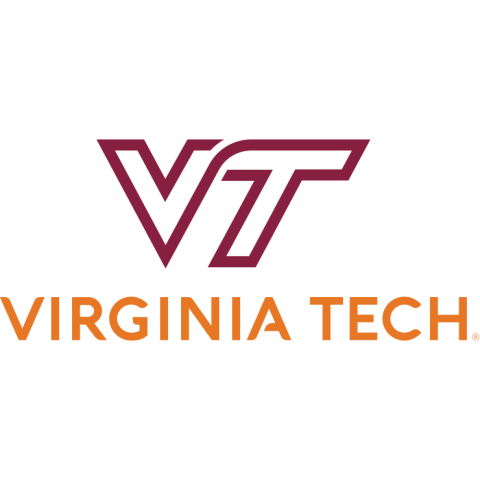
Collaboration is a quiet evolution for bold impact
How can universities drive global progress through creative collaboration with private sector partners? Brandy Salmon shares lessons for university leaders
Research management
Sponsored by
Elsevier helps researchers and healthcare professionals advance science and improve health outcomes for the benefit of society.
The image of the university as an isolated ivory tower is giving way to a new vision: one where the institution serves as a true partner, facilitator of innovation and catalyst for collective impact with a diversity of companies, foundations and other private sector organisations. The modern university is increasingly called on to engage with communities and solve real-world problems. In this model, the university becomes a collaborator in meaningful change.
Whether it’s preparing the next generation of leaders, mobilising researchers to address national and global challenges such as the increasing demand for energy, supply-chain fragility or how to fuel regional economic growth, strategic partnerships offer universities the opportunity to make profound contributions beyond academic walls.
Recognising this, Virginia Tech has been building an engine to enable collaboration across sectors. The Innovation and Partnerships team includes business development, engagement, creative and technical professionals. Involving leadership, faculty, students and staff, it works hand in hand with partners to tackle pressing global issues through research, talent and shared ambition.
Global lessons from institutional evolution
Rather than relying on traditional levers of institutional change, the university has embraced collaboration – as a strategy, a mindset, a network and a vehicle for impact. While deeply rooted in its identity as a land-grant university, Virginia Tech’s approach might hold lessons for institutions anywhere.
To be clear, none of this has happened in a vacuum. Collaborations across sectors have ensured our institution’s ability to deliver on its tripartite mission: education, research and engagement.
- The alchemy of promoting partnerships between higher education and industry
- The power of partnerships in preventing regional talent drain
- Techniques for designing and managing international collaborations
The Innovation and Partnership team, which I lead, serves all aspects of corporate and foundations partnerships, giving me a distinct vantage point from which to see how partnerships can accelerate research translation, technology commercialisation and new venture creation.
Through this work, we’ve learned that collaboration must be more than a tactic; it must be a cultural commitment embedded in institutional identity. Below are four strategic principles that have shaped our approach, with lessons for leaders seeking to drive institutional evolution and impact.
1. Co-locate talent, innovation and industry to drive economic growth
University leaders should prioritise breaking down geographic and intellectual silos by actively co-locating students, researchers and industry partners. Embedding industry-defined, project-based learning within academic environments helps ensure graduates are work-ready and able to contribute immediately in fast-evolving sectors.
To achieve this, invest in spaces where innovation, education and enterprise converge – not just physically but programmatically. Build ecosystems that foster collaboration, creativity and shared purpose across sectors and disciplines.
Our new hub in Alexandria, Virginia, is one such example. Originally catalysed by public-private partnerships tied to the arrival of Amazon’s HQ2, the campus was designed to embed collaboration at every level. Today, it serves as a “centre for next” for talent development in high-demand fields such as artificial intelligence, wireless technologies and quantum computing – all grounded in industry partnerships and forward-looking curricula.
Comparable efforts elsewhere include London’s Knowledge Quarter, where universities, cultural institutions and start-ups cluster to accelerate innovation, and Singapore’s innovation corridors, where public agencies and academia jointly advance sectors such as maritime decarbonisation and fintech.
Takeaway for leaders: Invest in place-based innovation strategies that bring talent and industry together. Design spaces and programmes that spark collaboration across sectors – and prepare students not just for jobs but for the future of work.
2. Align institutional strengths with national or global priorities
Ask yourselves: “What big problems are we best positioned to help solve?” Universities worldwide are stepping up to address strategic imperatives, from advance manufacturing to cybersecurity to public health.
The National Security Institute, for example, helps meet the critical demand for talent and research in defence and intelligence, blending academic expertise with government and industry priorities. The initiative has earned trust and investment by directly addressing high-stakes national needs in the backyard of the federal government in Arlington, Virginia, and the Pentagon.
Takeaway for leaders: Convene the right partners – and commit to serving them. When academic strengths are matched to urgent public needs, research gains new relevance and support.
3. Mobilise regional stakeholders to reimagine what’s possible
University leaders should view their institutions not only as centres of learning and research, but as anchors of regional transformation. By leveraging their convening power, universities can bring together local government, industry, healthcare and community partners to address shared challenges and build sustainable futures.
Effective place-based partnerships begin with listening and long-term commitment. They require universities to move beyond transactional engagement and instead serve as stewards of bold, inclusive ideas that reflect regional priorities.
In Roanoke, Virginia, we partnered with Carilion Clinic to reimagine a regional healthcare ecosystem, giving rise to the Fralin Biomedical Research Institute – now a dynamic district for biomedical discovery and health innovation. Similar models exist globally, such as the University of Cape Town’s integrated health partnerships, and medical innovation zones emerging in Denmark and Brazil.
Takeaway for leaders: Root your strategy in place. Universities can play a leading role in regional revitalisation when they build trust and align expertise with community needs.
4. Bring partners into the innovation process from the start
To unlock the full potential of innovation partnerships, universities must treat industry not as end users of research but as co-designers of it. This means engaging them from the earliest stages of discovery and programme design, and building systems that enable shared ownership of outcomes.
Successful collaboration hinges on mutual value creation – identifying common goals, aligning incentives and building flexible pathways to experimentation and impact.
For example, our Coalition for Smart Construction is being conceptualised with private sector leaders to reimagine how construction innovation happens. Together, we’re mobilising to address challenges such energy efficiency, advanced materials and automation in construction to support an industry in need of innovative solutions, third-party testing and evaluation, and new sources of top talent.
Takeaway for leaders: Build innovation pipelines that invite co-creation. Engage early, build shared goals, and move faster and further – together.
The future is collaborative
These stories reveal not just a new way of operating in the world but a new way of being a university. The most effective partnerships are rooted in shared values, a long-term vision and willingness to navigate complexity together. Crucially, these relationships are not transactional – they are transformational.
For higher education leaders around the world, one thing is increasingly clear: building meaningful partnerships across sectors is no longer optional. It is fundamental to the future of global progress.
Brandy Salmon serves as vice-president for innovation and partnerships at Virginia Tech.
If you would like advice and insight from academics and university staff delivered direct to your inbox each week, sign up for the Campus newsletter.
Research management
Sponsored by





